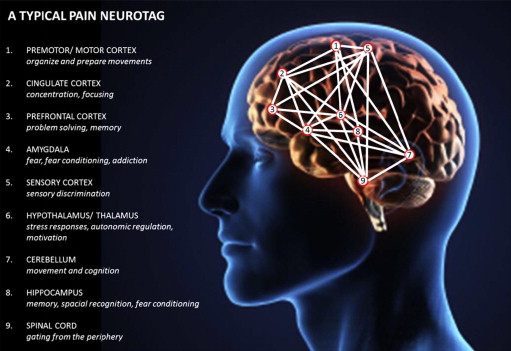OLDER POSTS IN THIS SERIES
.............................................
Earlier I posted "Is manual therapy even necessary?" Probably not, in the long run... However, it has a place in the short run. This blog series is an exploration of that.
Yesterday I quickly scratched down thoughts with supporting evidence, and listed them in a blogpost here. The plan is to flesh out these ideas a bit better, in this blog series.
The first point is about neurotags.
I wrote,
"1. The brain, once a neurotag has arisen and become easily triggered, can't go back to being a brain that never had that neurotag. (I think of a neurotag as a tangled mess of enhanced firing, sort of like a positive feedback loop but more of a birds' nest than a simple loop)"
So, let's discuss neurotags first.
What is a neurotag?
A neurotag is a "pattern of neuron activation which creates a certain output of the brain, such as a perception, thought, movement or immune system response."(1)
".. when someone mentions a slipped disc, and you activate your neurotag for “slipped disc” to think about it, you also activate some of the member cells for your back pain neurotag. Therefore thinking about a slipped disc will lower the threshold for activation of your back pain neurotag. Get it? Reread if necessary! This is a very simple explanation for why pain can be modified by so many different inputs."
See also Butler's definition(2) : Neurotag is another word for "neurosignature", or for "representation".
 |
| SOURCE: Zac Cupples (3) |
Construction of a neurotag is perfectly normal brain behaviour. It's not about your brain being defiant or evil or mean to you. It's how brains remember what they have learned - they build associations. Synapses are involved. Enhanced signalling is involved. Glia are involved, along with 250,000,000 synaptic proteins that turn over every few days (4). Imagine that.
When I think of a pain neurotag, I think of a cobweb gathering dust.
I also remember the ant swarm that got stuck in a positive feedback loop around the base of a tree, and couldn't break free (5).
I think of Erik Meira's post (6) about positive feedback loops, Getting Rid of SomethingPositive.
"Remember "positive" does not mean "good" when we talk science. It means "additive".
.......................................
1. Review of Moseley/Hodges Talk Part Two Todd Hargrove, BetterMovement.org blog, Oct21/2012
2. What is a Neuromatrix? David Butler, Neuromatrix Training blog, Jan22/2008
3. Graded Motor Imagery, Zac Cupples, April 24/2013
4. The Remarkable Neuron: Erin Schuman at TEDxCaltech, youtube video 14:30, Feb8/2013
5. The Ants go Marching One by One... Diane Jacobs, HumanAntiGravitySuit blog, April30/2014
6. Getting Rid of Something Positive Erik Meira, The PT Podcast blog, April9/2014
No comments:
Post a Comment